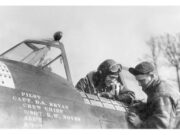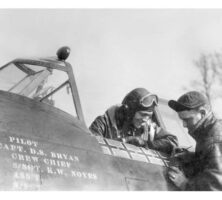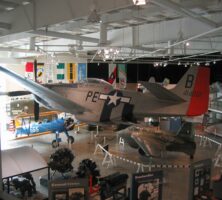Donald “Bush” Bryan, a retired U.S. Air Force lieutenant colonel and decorated veteran of World War II (1941-45), lived in Adel for more than thirty years. He was a former member of the famed Eighth Army Air Force, or “Mighty Eighth.” Bryan flew for the 352d Fighter Group and during his lifetime was considered to be the 352d’s “leading living ace.” Officially credited with 13.3 downed enemy aircraft—including five in one day during a harrowing fifteen-minute dogfight—Bryan was awarded the Distinguished Service Cross.
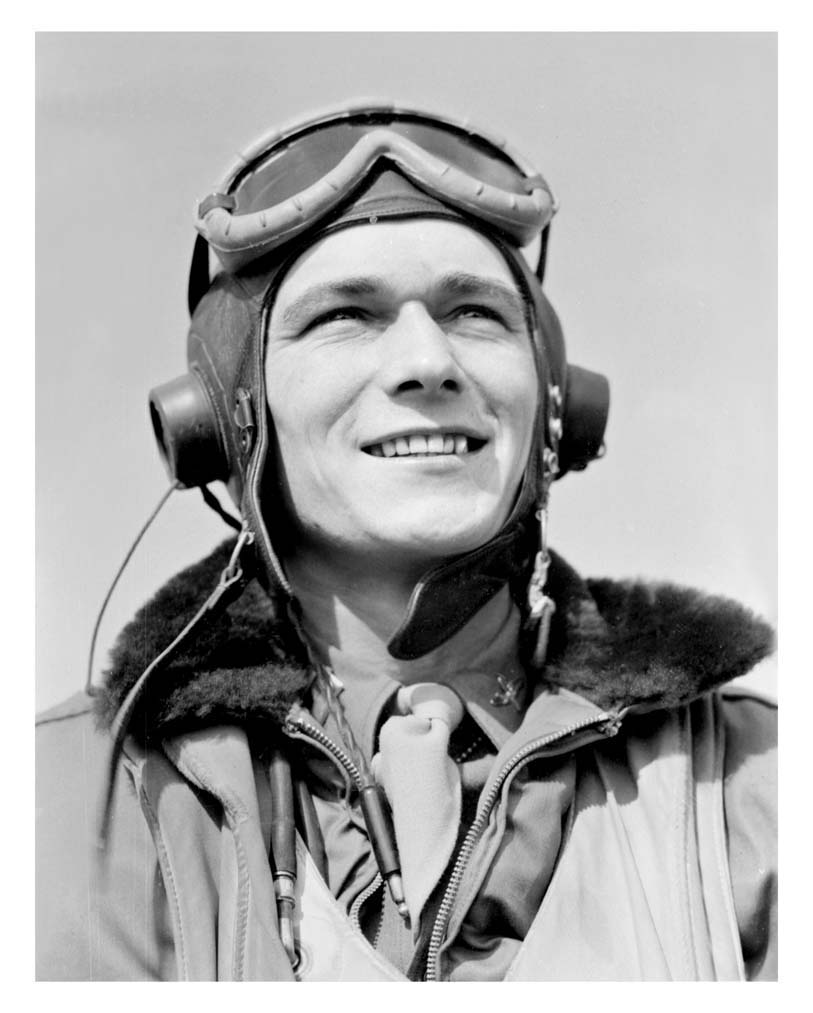
Born on August 15, 1921, in Hollister, California, to Ellis E. and Ethel Birdsall Bryan, Donald S. Bryan was raised on a farm near Paicines, California. He joined the U.S. Army Air Corps in 1943 and served in the air force for twenty-three years. During his military career Bryan garnered high honors. In addition to the Distinguished Service Cross, he received the Distinguished Flying Cross with two oak leaf clusters and the Air Medal with fourteen oak leaf clusters. (Oak leaf clusters indicate additional awards earned after the original metal was bestowed.)
Importance of Bomber Escorts
One of the primary missions of the 352d was to escort bombers on their dangerous missions over German territory during World War II. Bombing missions over Germany were some of the most dangerous assignments of the war. Before longer range escorts arrived, the Eighth Air Force lost approximately 70 percent of its heavy bombers in such missions. With the arrival of the 352d unit and others, the tide of the air war in the European theater turned dramatically. Eighth Army Air Force bombers now had the cover of such well-trained pilots as Bryan and, eventually, the technologically advanced P-51 Mustang planes, which had long range, good air speed, and maneuverability. Pilots like Bryan, with his Mustang, trimmed heavy bomber losses by as much as 70 percent.
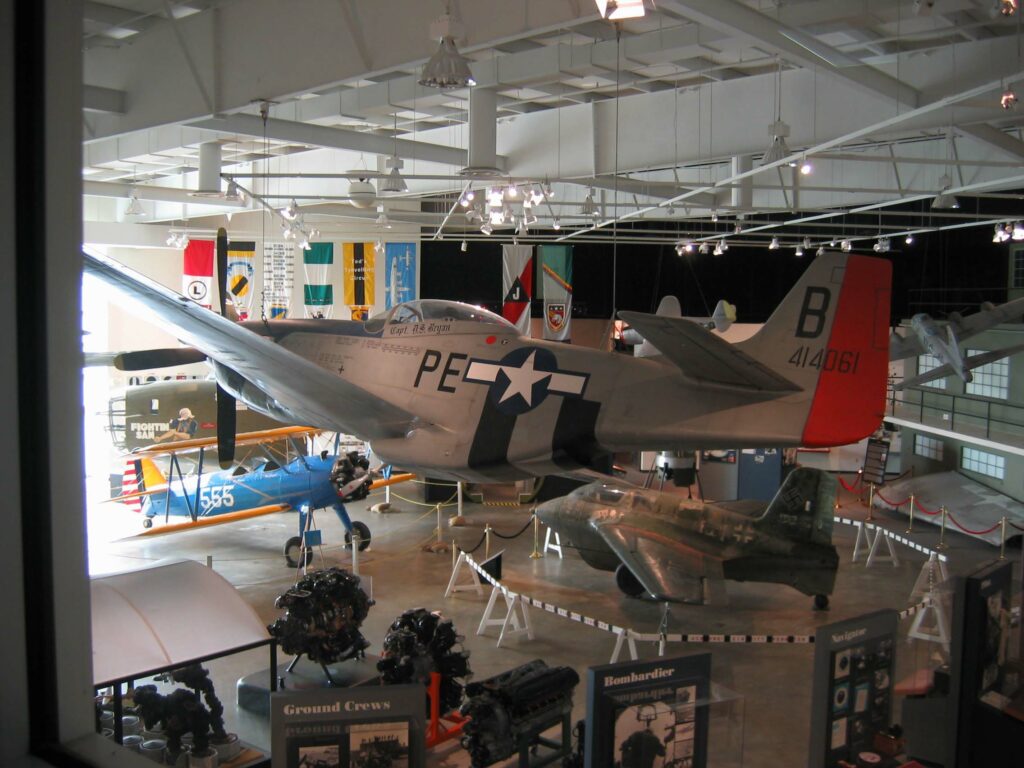
The Mighty Eighth
Bryan and his fellow 352d pilots were so effective as bomber escorts that their German counterparts begin to call them “those blue-nosed bastards of Bodney.” Flying out of Bodney, England, and later out of Chievres and Asch, Belgium, Bryan and other pilots of the 352d officially were credited with the destruction of 806.5 enemy aircraft. In addition to Bryan, the 352d produced twenty-eight other aces and won the Army Air Force’s highest unit citation twice. The 352d was the top-scoring fighter squadron in the European theater.
The skill of the 352d’s pilots and the performance of their Mustangs is difficult to exaggerate, as illustrated by Bryan’s personal record. In addition to the five downed aircraft in one day on November 2, 1944, Bryan is credited with three downed enemy aircraft in one day on a previous mission (September 27, 1944). He later downed one of Adolf Hitler’s new jet fighters, which Germany introduced toward the end of the war.
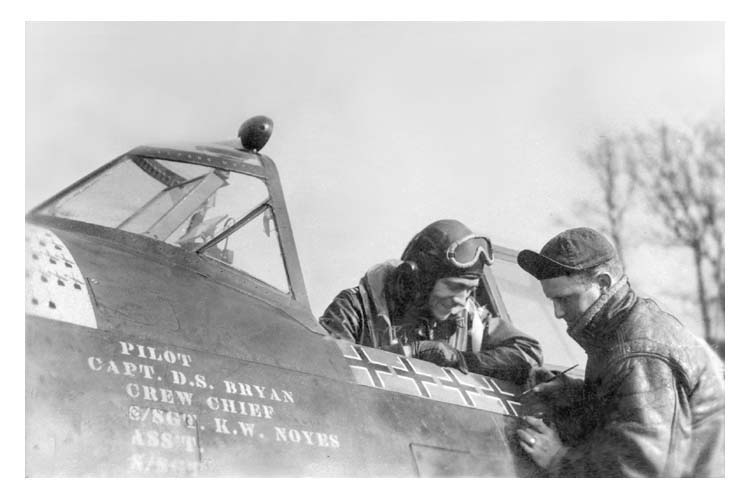
Bryan also led the ultimately successful mission to find a fellow fighter pilot, Fremont Miller, who was forced to ditch in the very cold waters of the North Sea on April 15, 1944. Miller survived on a dinghy for three days, during which time Bryan attempted two rescue missions in foggy, dangerous conditions. Finally, leading a group of sixteen Mustangs after another mission on April 18, Bryan decided to search one more time for the lost pilot—a successful search that led to Miller’s rescue and saved his life.
Post-military Career
After his retirement from the air force in 1964, Bryan worked at O’Brien and Geer, an engineering firm in Syracuse, New York. In 1981 he moved with his wife, Frances, to Adel. The couple, who had four children and eleven grandchildren, lived in Adel for the remainder of their lives and were active members of the community. Bryan died on May 15, 2012, at the age of ninety.
Bryan’s personal exploits, as well as those of his fellow P-51 pilots, are well documented in the Mighty Eighth Air Force Museum, located just outside Savannah. A replica of Bryan’s third P-51 (Little One III) is on display, and visitors can watch combat film from the archives of the Eighth Army Air Force.


